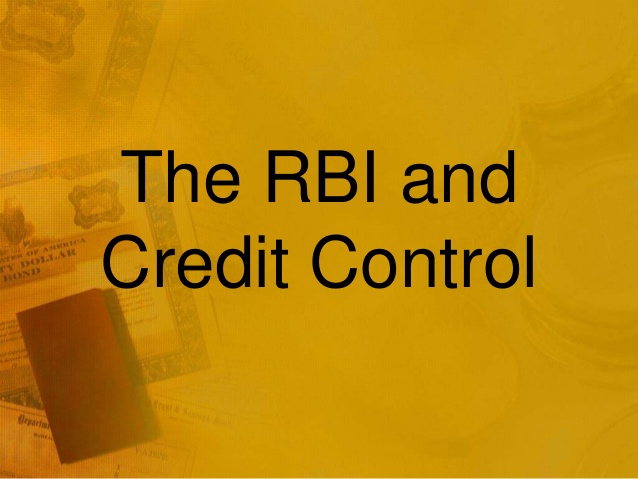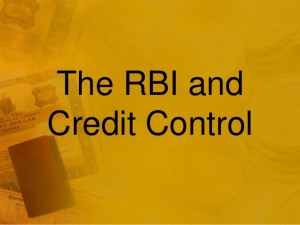CREDIT CONTROL METHODS OF RBI
It is one of the important function of RBI for controlling supply of money or credit. There are 2 types of methods employed by the RBI to control credit creation:
- Quantitative method
- Qualitative method
Quantitative method:
- Bank rate: It is the rate of interest at which central bank lends funds to commercial banks. During excess demand or inflationary gap, central bank increases bank rate. Borrowings become costly and commercial banks borrow less from central bank. During deflationary gap central bank decreases the bank rate. It is cheap to borrow from the central bank or the part of the commercial banks which in turn the Commercial banks also decreases their lending rates.
- Open market operations: The open market operations means buying and selling of bonds and shares by RBI is open market. It is also called buying and selling of government security by the central bank from the public and commercial banks.
Sale of securities
At the time of inflation the RBI starts selling of government securities in the market. The resources of commercial bank are reduced and they are not in a position to lend more to the business community. This reduces the investment and aggregate demand.
Purchase of securities
At the time of deflation the RBI starts buying securities from open market. The reserves of commercial banks are raised and they lend more investment, output income and aggregate demand starts rising.
Legal Reserve Requirement: It is another method of RBI for controlling credit or supply of money. It includes 2 types of methods such as:
- Cash Reserve Ratio (CRR): It is the ratio of bank deposits that commercial bank has to keep with the central bank. At the time of inflation the RBI increases the rate of CRR, similarly at the time of deflation RBI decreases the rate of CRR.
- Statutory Liquidity Ratio (SLR): Every bank required to maintain a fixed percentage of its assets in the form of cash or other liquid assets called SLR. At the time of inflation the RBI increases the SLR, similarly at the time of deflation RBI decreases the rate of SLR.
Qualitative method:
- Margin requirements: It is the difference between the market value of loan and the security value of loan. At the time of inflation the margin requirement value decreases by RBI for discouraging people and commercial banks for approaching more and more amount of loan. On the other hand at the time of deflation the RBI increases the value of margin just to encourage issuing of more amount of loan to the commercial banks and general public.
- Moral suasion: It refers to written or oral advices given by central bank to commercial banks to restrict or expand credit.
- Direct Action: Sometimes the RBI directly takes action against the commercial banks. It takes action to such type of commercial banks who are not following the rules regulation of RBI. It cancels their registration or nationalization of commercial banks.
- Rationing of credit: It is the related to limiting the amount of credit, which is issued by all the commercial banks. RBI fixes the size of issuing the credit according to the requirement of the country.
Click here for government certification in Accounting, Banking & Finance





14 Comments. Leave new
very informative
Informative
Credit control is important aspect in order to control inflation or deflation…… Well done Himanshi
Nice work.
good work
Informative
informative one!
Informative and good work..!
Well written indeed!
Nice work!!
Exolaination is simple and understandable.. Good job!
Very well writen 😀
actually Good compilation of information 😀
A very informative article
Easy to understand